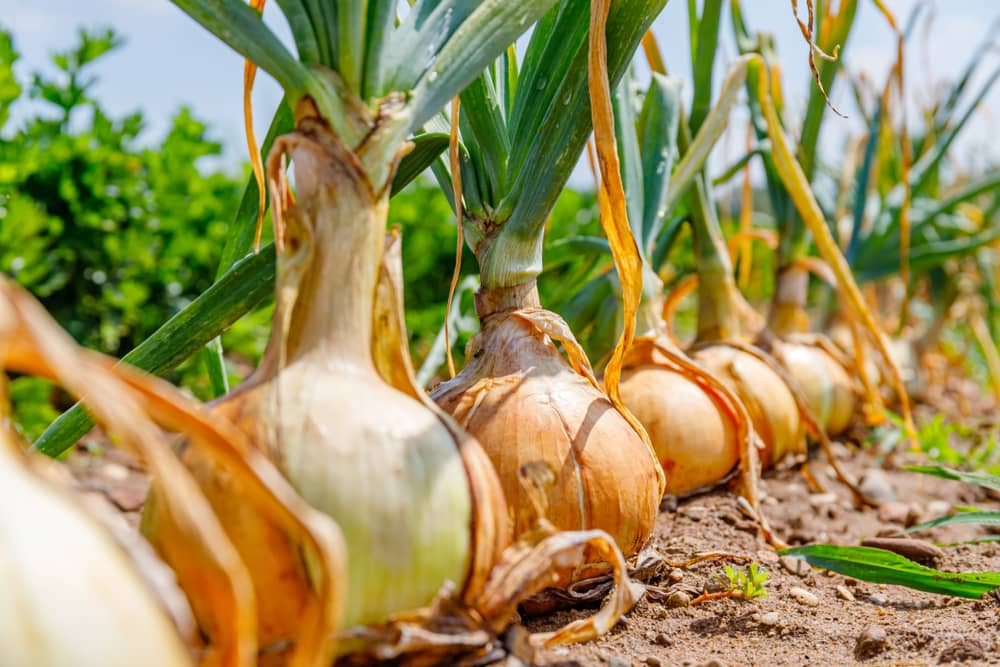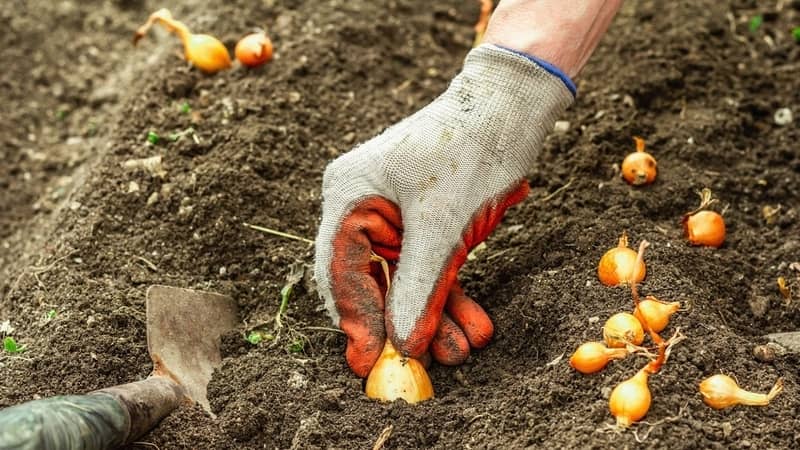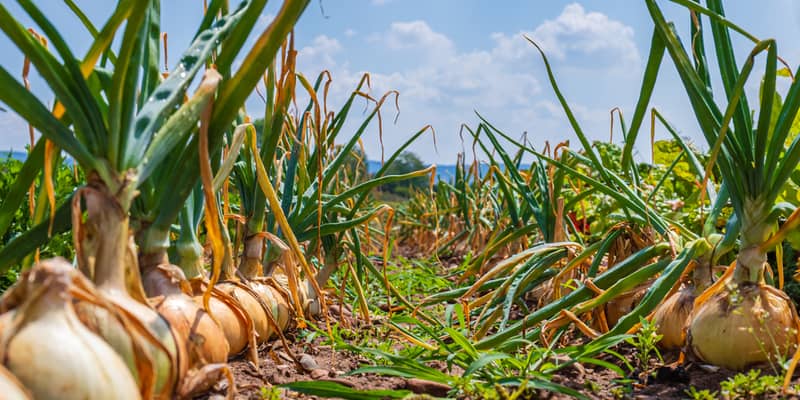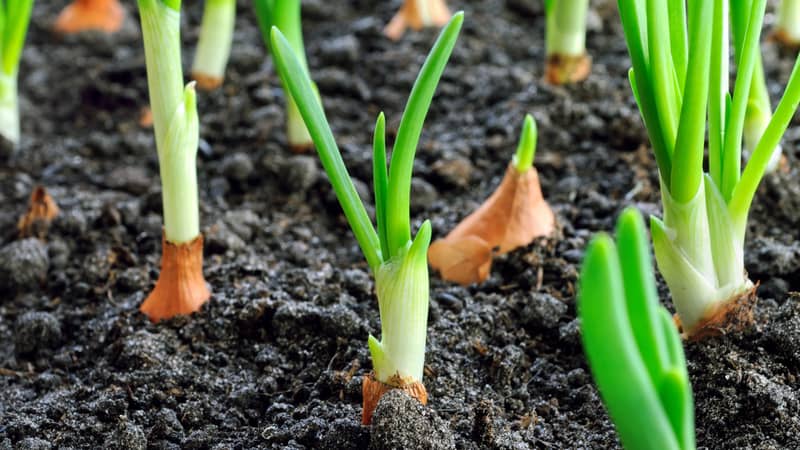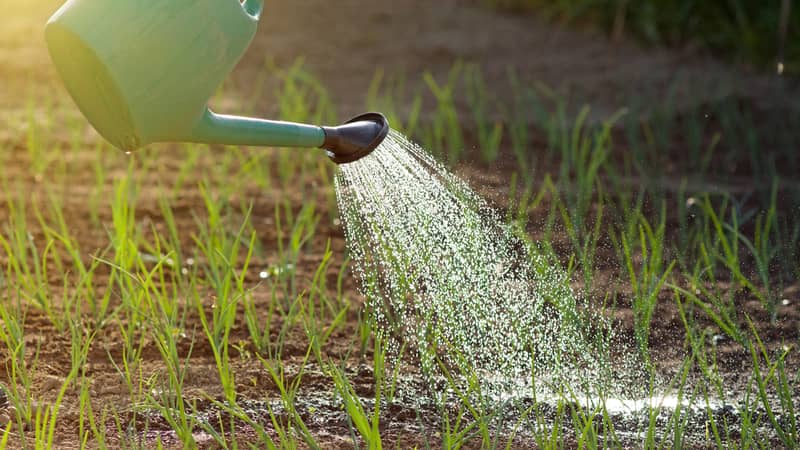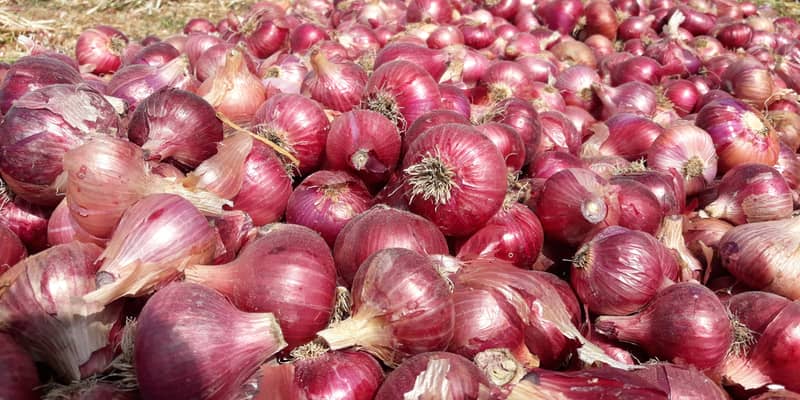Don’t cry for me, Allium cepa!
Onion bulbs are a kitchen staple – they add a sweet-savoury flavour to any dish. Add them raw to salads, cook them up in a French onion soup, or toss them in stir-fries. Growing onions is also very simple, and they tend to produce generous harvests.
There are many varieties of onions, but they all have similar growing conditions. Onions need at least six hours of full sun, and should be planted in well-drained soil. You can plant onions in most climates. Sow seeds 6.0mm deep, then firm the soil surface and keep it moist.
Ready for that rewarding allium crunch? Read up on how to grow onions – although how you enjoy a fresh onion is up to you!
Planting Onions
The easiest way to grow onions is to plant onion sets. These are immature bulbs from the previous year. It’s like growing onion from an onion!
Onion sets lead to early harvests and are least susceptible to disease. However, they’re prone to bolting (sending up premature flower stalks).
Look for sets that are about 1–1.5cm in diameter since they’re least likely to bolt.
Plant each onion bulb in early spring to mid-spring – once the soil is warm. Prep the ground ahead of time by weeding the soil and layering some mulch.
Leave the tips poking out and space the bulbs about 5.0–10.0cm apart.
Keep sets well-watered as they mature, and keep an eye on their growth.
Growing Onions from Seed
Growing plants from onion seeds is straightforward. Ideally, plant each onion seed in a plug tray or pot so you don’t need to thin out your batch. Otherwise, space your seeds 1.5cm apart.
Sow seeds in moist seed potting soil or seed-starting mix. Place them in a cluster of 4–6 per space, 6.0mm deep, then firm down the soil. Water regularly with a fine spray.
When onion seedlings are about 6–8cm tall, pluck them out and re-pot them or plant them in the ground. Space them about 15.0cm apart.
Onion Growing 101
You may have questions about your vegetable garden – don’t worry. Whether you’re growing white onions or other varieties, here’s your FAQ on onion plants.
What are some onion varieties?
There are three popular types of onion – yellow, red, and white. You also have the sweet onion and the pearl onion. Shallots and scallions (aka salad onions) are also types of onions. There’s even a potato onion!
How much sunlight do onions need?
Grow onions in a sunny spot since they like full sun – at least six hours of it.
What soil do I grow onions in?
The soil should be moist but well-draining, with plenty of organic matter like mulch. Onions don’t grow well in acidic soil, however.
How much should I water onions?
Onion roots are shallow, so they’re not efficient at taking up water. Keep soil consistently moist, although they can tolerate some drought. Once the bulbs have enlarged, slow down the watering.
If you’re unsure about what “consistently moist” means, check in with an expert gardening service for help! Or you can let them look after your ornamentals so you can focus on your edible garden.
What climate do onions grow in?
Onions can grow in any and all climate zones, although some varieties aren’t suitable for far north Australia. In most regions, you should plant your onions in autumn so they grow through winter.
What diseases do onions get?
While generally, your crop should remain pest and disease-free, that’s not always the case. One pest you should look out for is onion maggots. These are larvae that move from bulb to bulb, burrowing upwards to eat the stems.
Reduce chances of maggots by sowing onions between other plants (“scatter-planting”). You can also place a thin layer of sand around the bulbs to discourage adult flies from laying eggs.
Meanwhile, onion thrips can attack in the summer. You can tell there are thrips by deformed plants with silvery splotches on the leaves. Deter pests by weeding your garden regularly.
There’s also downy mildew – a purple mould that grows in warm, humid weather such as summer. Make sure the soil drains well and rotate your plants often.
Are onions also chives?
Nope. Chives are herbs, and are a completely different species of plant. Onions share a family with scallions and green onions. Don’t confuse them when cooking or you’ll come out with a very different taste.
Harvesting Onions
When you see most of the leaves bending over to the ground, it’s almost time to harvest your onions. Give it a few weeks until the tops start to turn yellow, then brownish. Dig them up on a sunny day then move them under a cover to dry.
It’ll take about two weeks for onions to ‘cure,’ but it will toughen up the outer skins so the onions keep for longer.
Storing Onions
Store onions tied up in mesh bags or suspend them in nets. You can also weave the onion tops into strings. Your onion harvest should last you through the winter.

